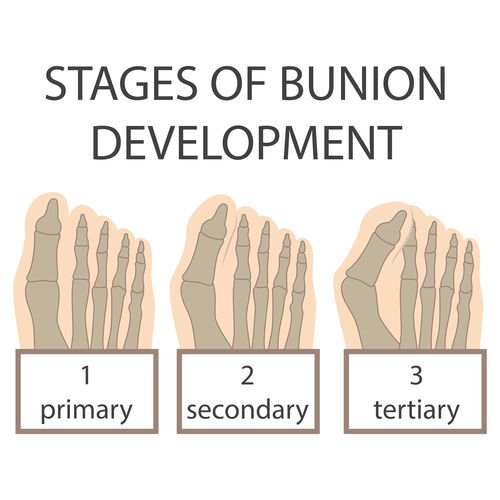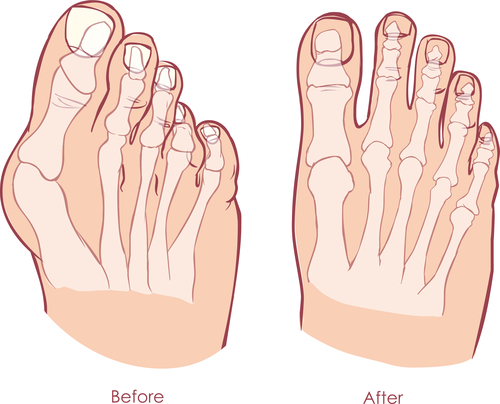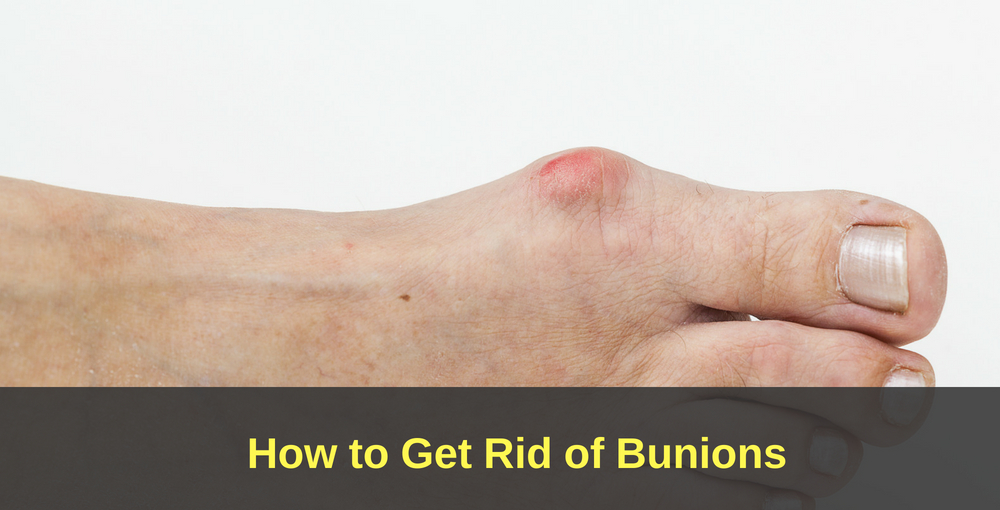1.3K 738 18
Bunions are quite common and, of course, unattractive – no doubt about that. The condition may be painful and causes a deformity on your big toe. But pain, or no pain, bunions may affect the quality of your life.
Imagine going to the beach with closed shoes to hide the deformity while every one of your friends is having fun with saddles – it is not fun, not fun at all!
However, you should not despair. There are easy ways you can get rid of bunions, and enjoy those barefoot outdoor moments without pain, discomfort or shame.
Table of Contents
What Causes Bunions?
 Well, we can explain the source of bunions in two words – excessive pronation. But without the scientific jargon, bunions are from your feet’s atypical motion. Bunions develop from adopting the wrong foot posture as you walk from one point to the next, which happens when you wear the wrong footwear.
Well, we can explain the source of bunions in two words – excessive pronation. But without the scientific jargon, bunions are from your feet’s atypical motion. Bunions develop from adopting the wrong foot posture as you walk from one point to the next, which happens when you wear the wrong footwear.
The bony lump appears when you place too much weight on your foot sole’s inner edge.
If you have flat feet, and you wear shoes that are too tight, then your big toe will most likely bow towards your small toes.
If left untreated, bunions can leave your feet, and especially the big toes with an unnatural shape, not to mention pain. Bunions may also bring along other irritating conditions such as corns, calluses, hammer toes, and ingrown nails. Osteoarthritis in your big toe’s joint is also a possibility.
Risk Factors
Some people are more at risk of developing bunions than others – it happens. For example, women are more likely to develop bunions than men based on various factors.
For example, women who wear high heels are more likely to develop bunions than those who don’t. This is because high heels tend to concentrate the weight towards the toes, and thus chances of developing bunions are high.
Genes may also have a hand in those bunions that curve into your feet. Therefore, if you happen to notice that a generous number of your family members have bunions, the chances are that you are at risk of having your own.
Other risk factors include medical conditions such as gout and rheumatoid arthritis. In general terms, all those conditions that affect your feet by swelling or bone deformity most likely predispose you to bunions.
Low arches and flatfoot are another favourites for bunions.
Symptoms of Bunions
Typically, bunions are not so hard to identify. They are unattractive and, therefore, hard to miss. Bunions may sometimes cause discomfort or pain, but not always. Some people may even not experience any pain at all.
The most ‘not-hard-to-miss’ symptom of the condition is the curvature at the base of your big toe, the metatarsophalangeal joint. You will also notice that your big toe is gradually leaning towards the small toes as if getting close to whisper something.
The skin around the joint may appear reddish or inflamed. You will also feel some stiffness in your toe’s big foot.
Bunions can sometimes be painful but not what we would refer to as severe. However, this pain is continuous and may cause some discomfort.
Many people often confuse bunions with gout. However, there’s a difference. Gout will cause sudden strong pains but will not cause any deformity.
How to Remove Bunions Fast and Naturally
 Having the Right Footwear: the main cause of bunions is improper footwear habits. You can get rid of small developing bunions by ditching the wrong fitting and high heeled footwear. Typically, the wrong shoes negatively impact on the blood circulation to your foot leading to bunion troubles.Fashion should not come ahead of foot health, any day. It should first be fitting even before you can consider if it makes any fashion sense at all. And if you are not ready to give up your high heels, then you should make it a habit of resting your feet after every few hours to allow some recuperation.
Having the Right Footwear: the main cause of bunions is improper footwear habits. You can get rid of small developing bunions by ditching the wrong fitting and high heeled footwear. Typically, the wrong shoes negatively impact on the blood circulation to your foot leading to bunion troubles.Fashion should not come ahead of foot health, any day. It should first be fitting even before you can consider if it makes any fashion sense at all. And if you are not ready to give up your high heels, then you should make it a habit of resting your feet after every few hours to allow some recuperation.- Beneficial Oils: castor oil and olive oil can help shrink the bunion into non-existence. Typically, using any of the two to massage your feet enhances blood flow, thereby, shrinking the unsightly protrusion gradually.
- Foot Exercises: once in a while, your feet need exercises to stay strong and prevent bunions. However, if the bunions are past the prevention stage, then the right exercises may prevent further development and even shrink them.Some of the effective exercises you can do before jumping into bed and calling it a day include stretching your big toe with your fingers to align it with the rest. Another exercise is pointing straight ahead with your toes and curling them back in succession, remaining in the same position for about 15 seconds.Using your toes to pick objects is another great exercise to shrink that small bunion on your foot. Instead of bending to pick that pencil, put your toes to some good use by gripping the pencil with them.
- Often Walk barefoot: naturally, your feet should be without shoes – it is a natural adaptation. Squeezing them into improper footwear, with soft insoles does more harm than good by weakening the muscles. But that does not mean you should begin walking barefoot to work – the horror!What we mean is that you should gradually incorporate a barefoot lifestyle during your free time. Spend the weekends at the beach barefoot, and even play beach volleyball barefoot to give your feet a break. Some barefoot moments once in a while restores blood flow, strengthens your feet and keeps bunions at bay.If the bunions are at the initial development stage, then staying barefoot may shrink them naturally. However, if they are at an advanced stage, staying barefoot may be a source of pain. Use a thick carpet or thickly padded slippers.
